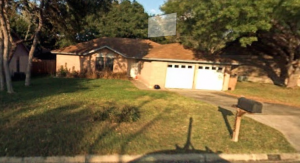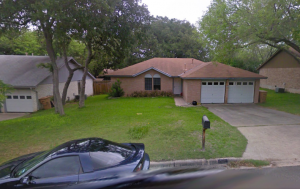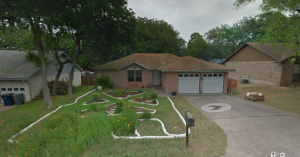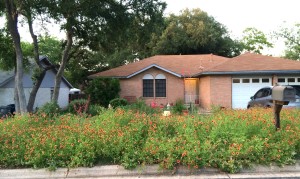Google Maps recently announced a new feature that lets you take a look at previous Street View photos of various locations. On a lark, I looked up our home to see what it looked like over the years. I was amazed to see the transformation, even though I lived through those changes.
When we bought our house in 2000, there wasn’t much of anything living in the front yard. We never weeded the grass, because then we wouldn’t have any lawn left. We also didn’t waste much water on the yard, so the grass, such as it was, always looked pretty bad, especially after a long, very hot summer.
One year, we threw out a bit of wildflower seed we acquired somewhere just to see what would happen. One little patch of lance-leaved coreopsis grew. That little patch planted the seeds of a grand transformation.
The plan was three-fold: Get rid of as much grass as possible, provide food, shelter, and water for birds, bees, and butterflies, and create a mini-golf course in the front yard. We drew up some plans, bought two pallets of native limestone, and went to work.
The limestone marked the lanes of the mini-golf course and outlined the flower beds. We dug golf holes in each corner of the yard and used plastic beverage cups to hold them open. (You can see one of the mini-golf holes near the mailbox in the following picture.)
Then we started planting.
We started with a limited selection, mostly native and drought-friendly plants that didn’t need much water. We decided to use the strip next to the street as the wildflower patch. Every fall, we throw out wildflower seeds — mostly bluebonnets, Indian blanket, and coreopsis.
Some years, like last year, the wildflowers are sparser and smaller because of a lack of rain. (We still don’t water our lawn much.)
Because of the rains we had last fall, this year the flowers are lush and beautiful and the yard is full of bees, butterflies, and birds.
We’ve seen all sorts of things visit our yard — from the ubiquitous migratory doves and native grackles to hummingbirds and hummingbird moths. Our front yard is full of life year-round. The flowers that bees and butterflies love for nectar and pollen produce seeds that the birds eat in winter.
The yard is always in transition — some things die, some things come back, some things get moved. There’s always something new to see.





